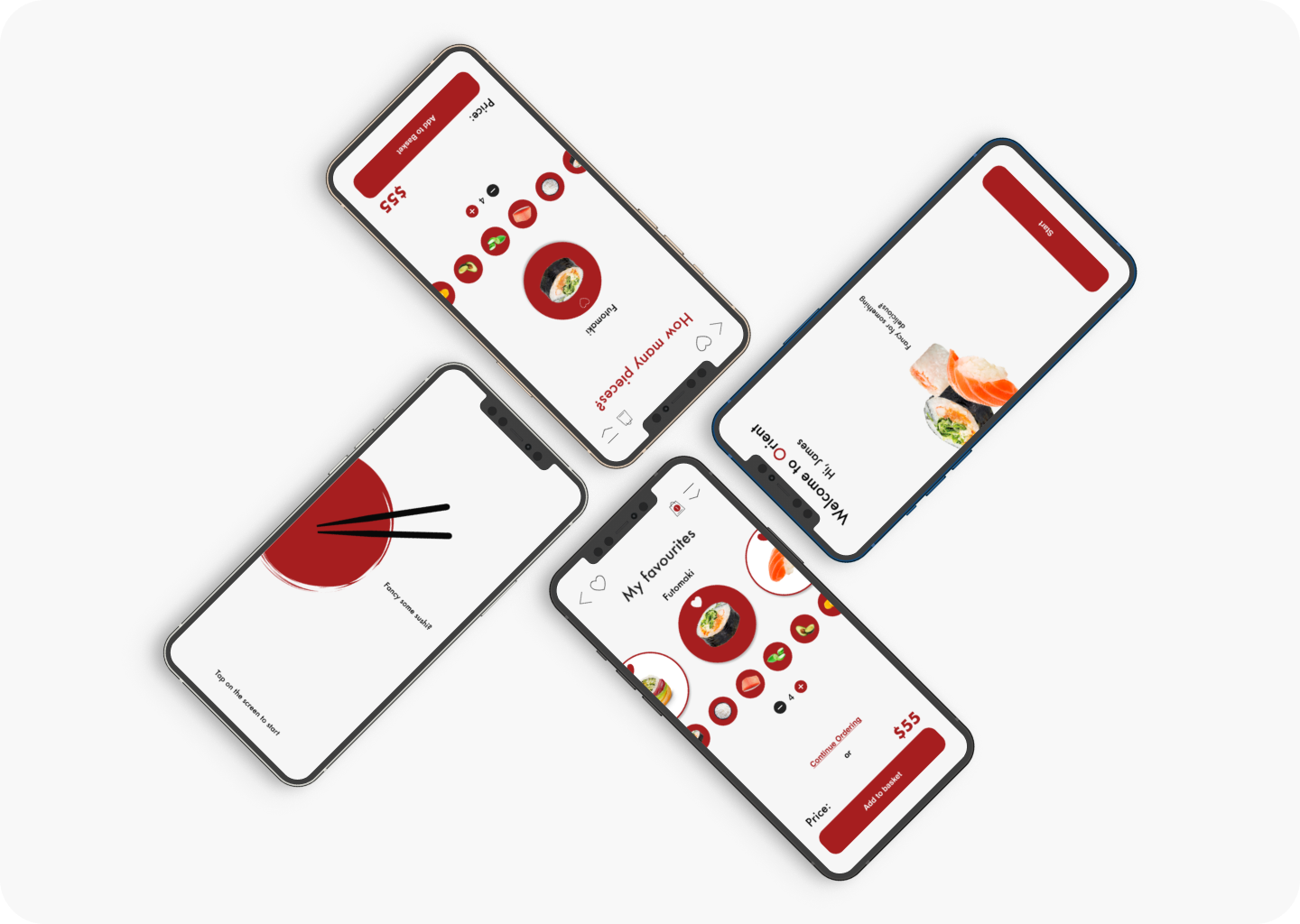Orient - the sushi app
OVERVIEW
The Orient Sushi App is a mobile app designed for customers to interact with the luxury sushi restaurant. Rooted in the principles of minimalist design and intuitive user experience, the app offers users a seamless and playful platform to discover, customise and order their favourite sushi dishes.
CATEGORY
Mobile Design, Food, Restaurant
TIMELINE
The project was an assignment I developed as part of the UX/UI Design training course run by Kreativstorm in September 2023.
ROLE
Research, UX/UI Design, Sketching, Prototyping, Copywriting
Problems to be solved
From a user perspective, traditional methods of ordering sushi, such as placing orders by phone or browsing paper menus, can be cumbersome and time-consuming. Typically, ordering is boring and lacks playful elements. Users may also have difficulty remembering their preferred ingredients or accurately communicating their order.
From a designer's perspective, the problem is to create a seamless and engaging digital solution that includes a playful element to enhance user experience and drive business growth.
Understanding of project
I would like to create a user-centric digital solution that enhances the sushi ordering experience, strengthens brand loyalty, and contributes to the success of Orient’s digital ordering platform. I have set some key goals for the application.
Main Goals
User Convenience
Prefers a convenient and efficient way to order sushi, avoiding traditional methods that may be time-consuming or prone to errors.
Personalization
Appreciate the ability to customize their sushi orders according to their preferences, such as selecting specific ingredients and quantities.
Engagement
Engage users through interactive features like drag-and-drop ingredient selection and playful design elements, encouraging repeat usage and fostering brand loyalty.
Brand Image
Maintaining a minimalist yet playful design aesthetic, inspired by traditional Japanese culture, will reinforce Orient’s luxury brand image and differentiate it from competitors.
Competitors
For the purpose of this assignment, I selected and narrowed down the area of competition to analyse to Chicago, USA. Here are some examples for reference and inspiration.
In Chicago, where Orient is based, competition in the sushi and restaurant delivery business is likely to be fierce. However, most of the target audience of exclusive sushi restaurants do not have their own dedicated app, usually just a website. Most restaurants use third-party providers through huge platforms such as Grubhub, DoorDash, Uber Eats or Postmates. The biggest advantages of such platforms are arguably wide availability, speed of service, less system failure. The downside of such solutions is probably the lack of differentiation, less brand positioning, and the inability to implement dedicated user solutions.
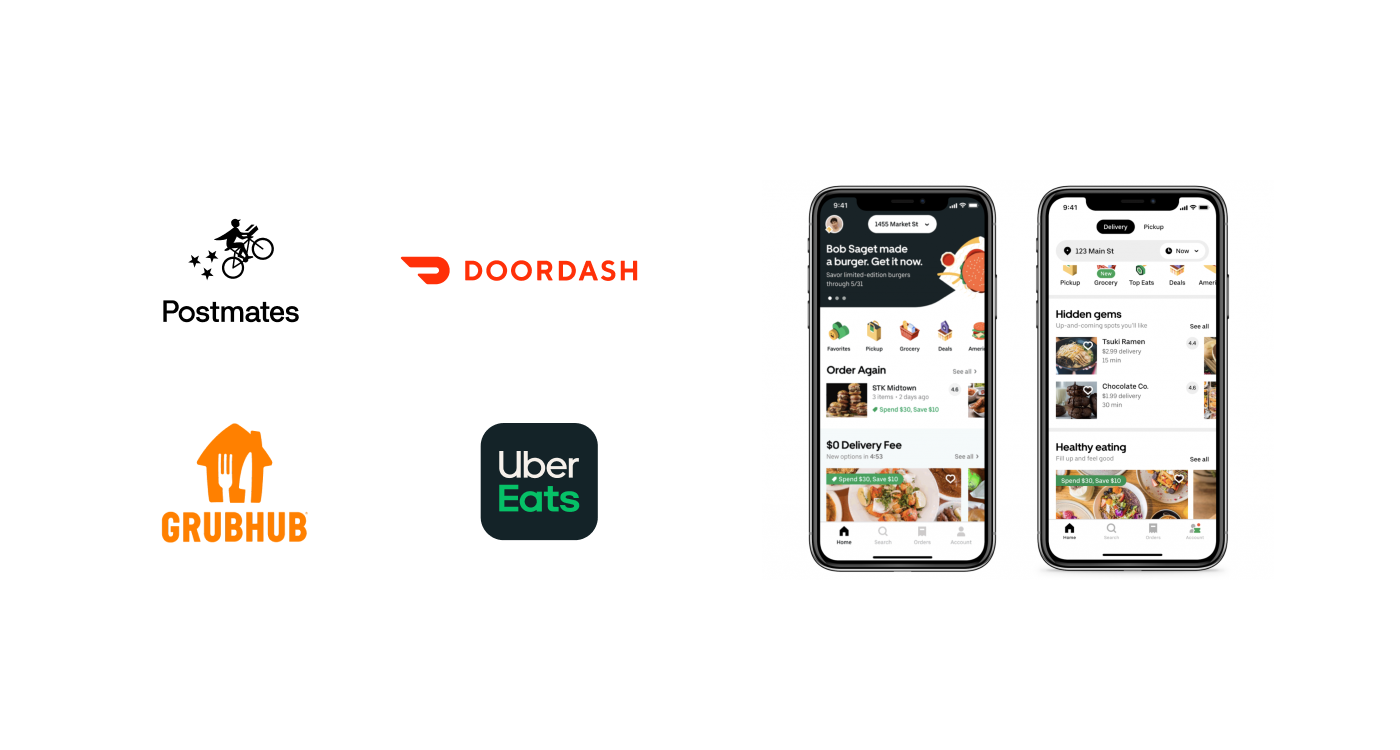
Research Analysis and Insights
To streamline the process, I created a categorised mind map that gave me an insight into the target group. By conducting thorough research, the Orient Sushi App can be tailored to meet their needs and preferences.
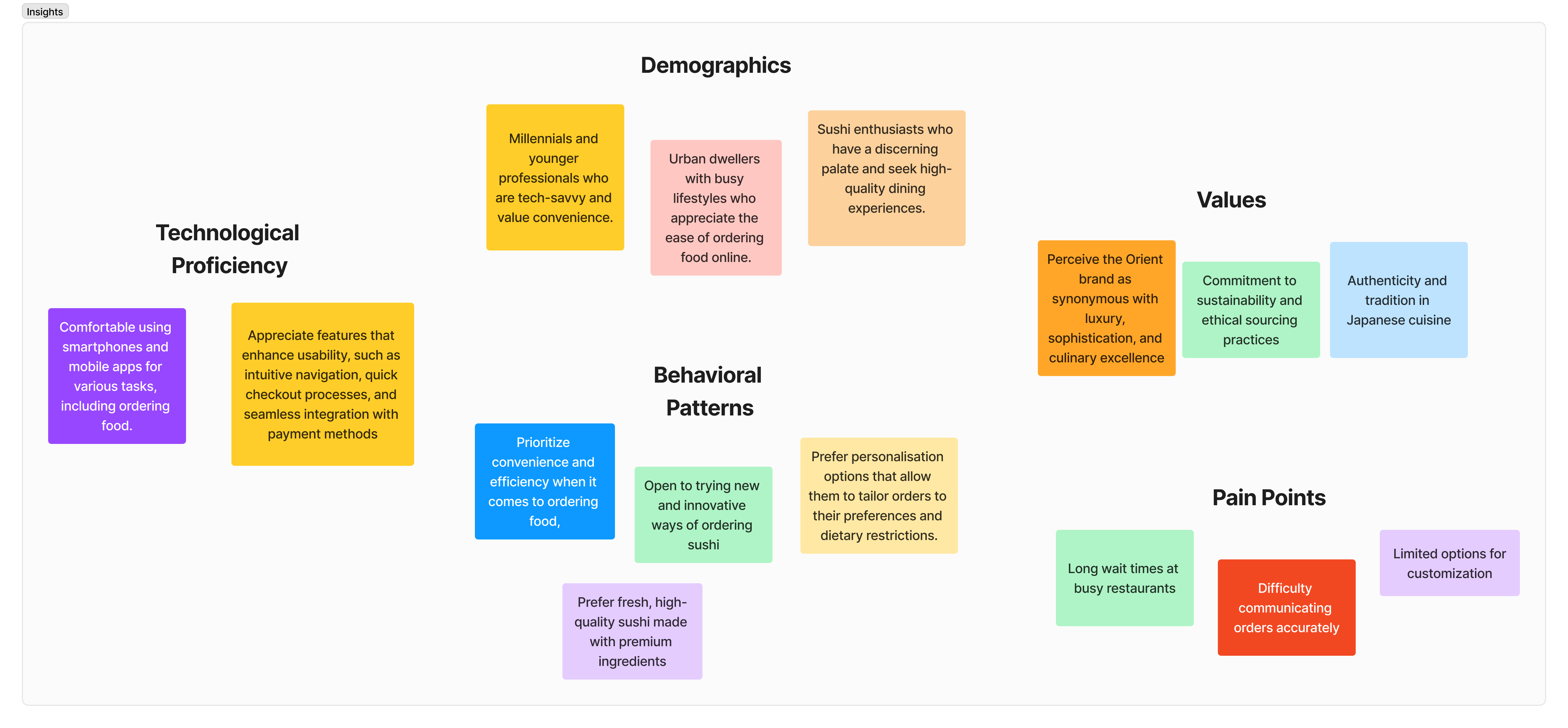
Personas
These personas represent two distinct user profiles for the Orient Sushi App and provide insights into their goals, needs, and pain points when it comes to ordering sushi. Designing with these personas in mind can help ensure that the app meets the diverse needs of its target audience.
Sarah
- Age: 28
- Occupation: Marketing Professional
- Location: Downtown Chicago
- Lifestyle: Busy, social, urban

Goals and Needs:
- Values convenience and efficiency when it comes to ordering food, especially after a long day at work or when entertaining friends at home.
- Enjoys trying new foods and flavors, including sushi, and appreciates having a wide selection of options to choose from.
- Likes to personalize her orders to her specific preferences, such as selecting her favorite sushi rolls and specifying any dietary restrictions.
Pain Points:
- Sarah often finds herself short on time and prefers quick and easy ordering options that fit into her busy schedule.
- She may feel overwhelmed by the multitude of choices when browsing menus and wants a straightforward way to order her favorite dishes without confusion.
Goals and Needs:
- Prioritizes healthy eating and seeks sushi options made with fresh, high-quality ingredients and minimal additives.
- Appreciates the convenience of ordering food online, especially after long days at work or when focusing on personal projects at home.
- As a software engineer, David enjoys exploring new apps and digital platforms that offer innovative features and seamless user experiences.
Pain Points:
- Having recently moved to Chicago, David may feel unfamiliar with the local dining scene and seeks reliable recommendations for quality sushi options.
- He may have specific dietary preferences or restrictions and wants assurance that his orders meet his dietary needs.
David
- Age: 35
- Occupation: Software Engineer
- Location: Recently moved to Chicago from San Francisco
- Lifestyle: Tech-savvy, health-conscious, active

Design process
Following the set guidelines and design goals, step by step I created a user-centric application to meet user needs, achieve business objectives and provide a smooth and satisfying user experience.
Moodboard
Inspired by the sophistication of Japanese culture and the playful yet minimalist design aesthetic, the moodboard combines elements of tradition, modernity, and culinary excellence.
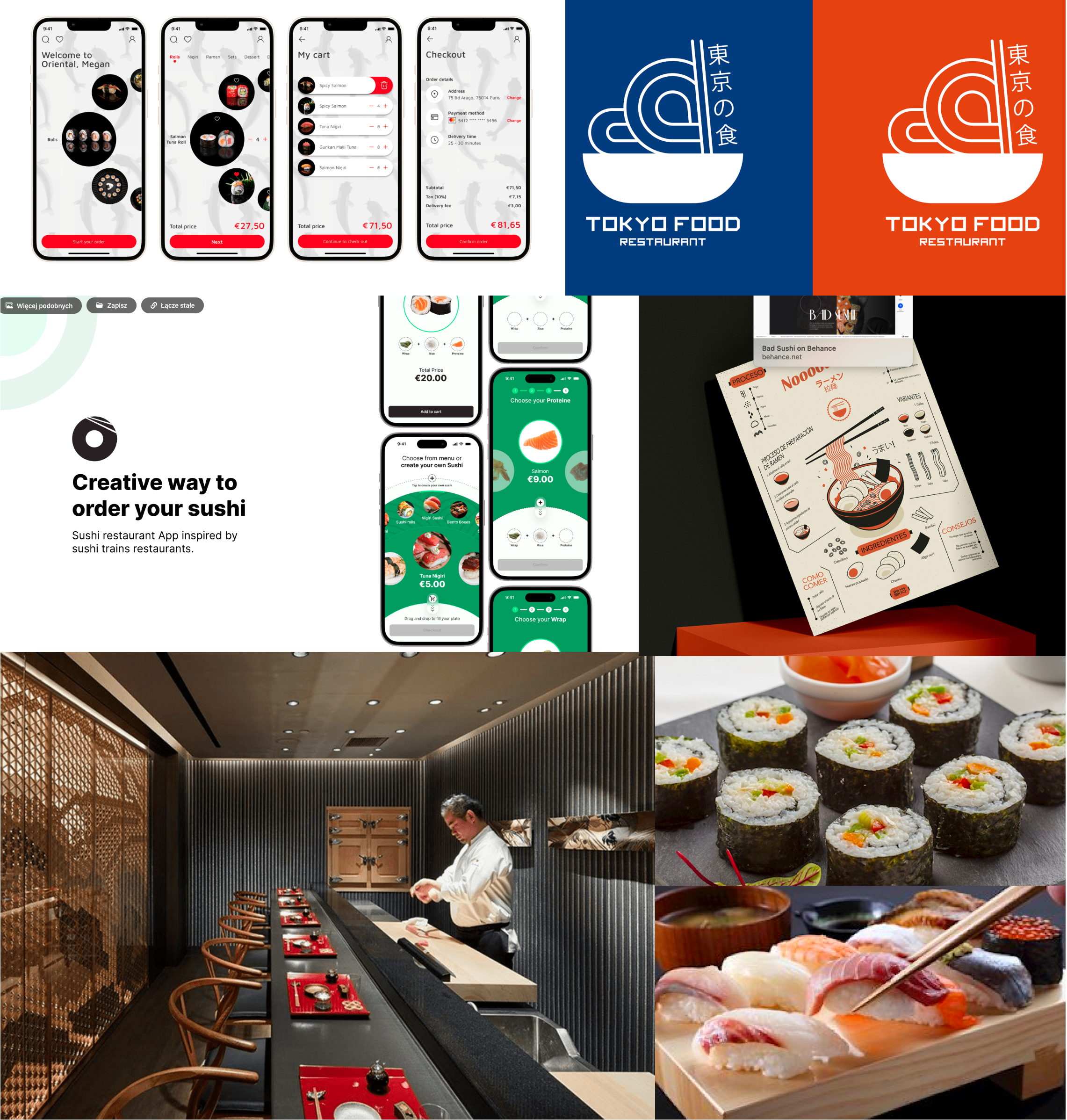
User Flow
With most of the information architecture flushed out I finish off with the main user flow which refers to the process from creating an account/logging in through order completion to payment and order processing.
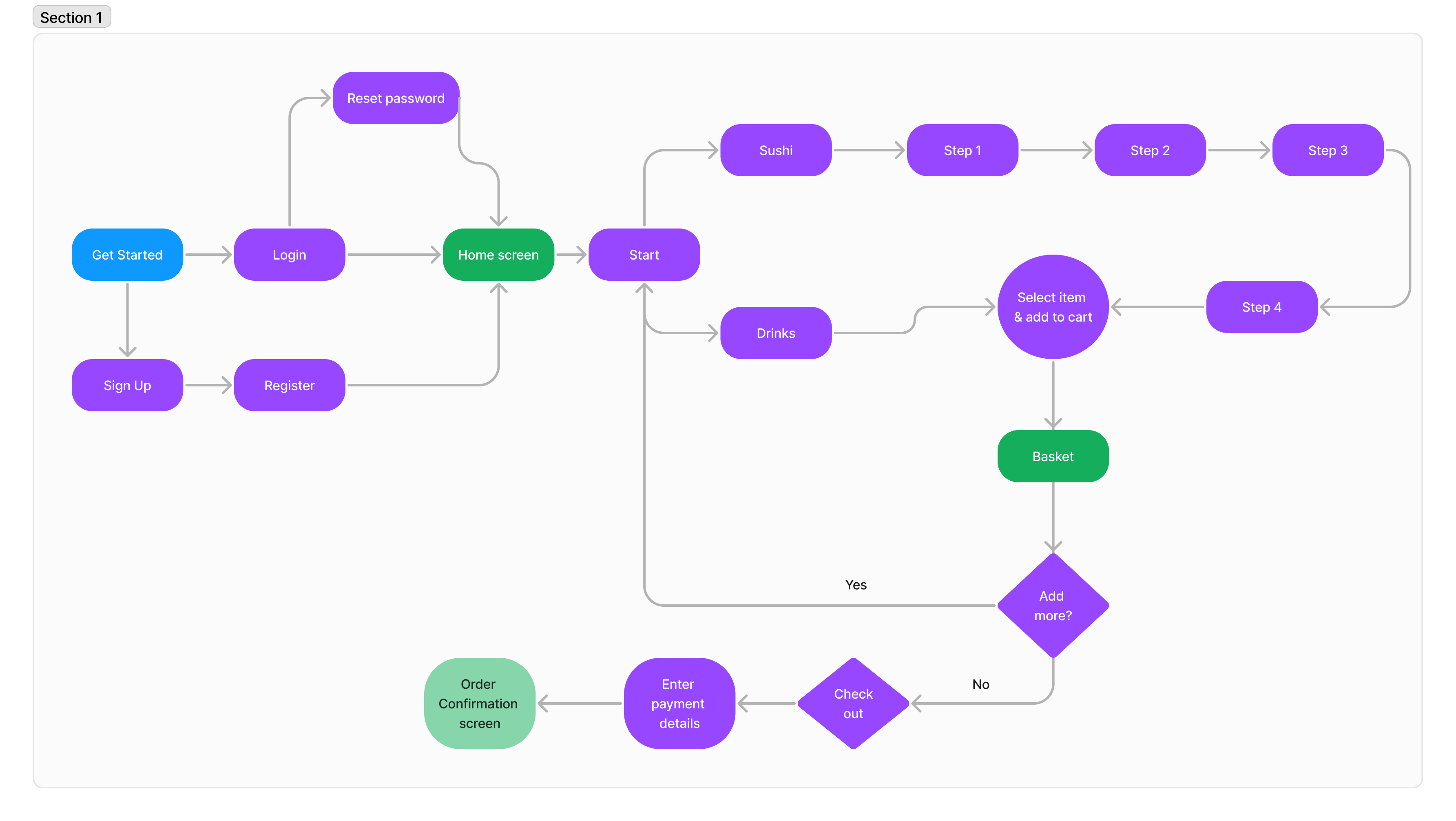
Sketches
With all the notes and research I gathered I began to the design the app. I sketched out several of the main screens using my user flow as a guide. This has allowed me to refine the creation of the application more effectively.
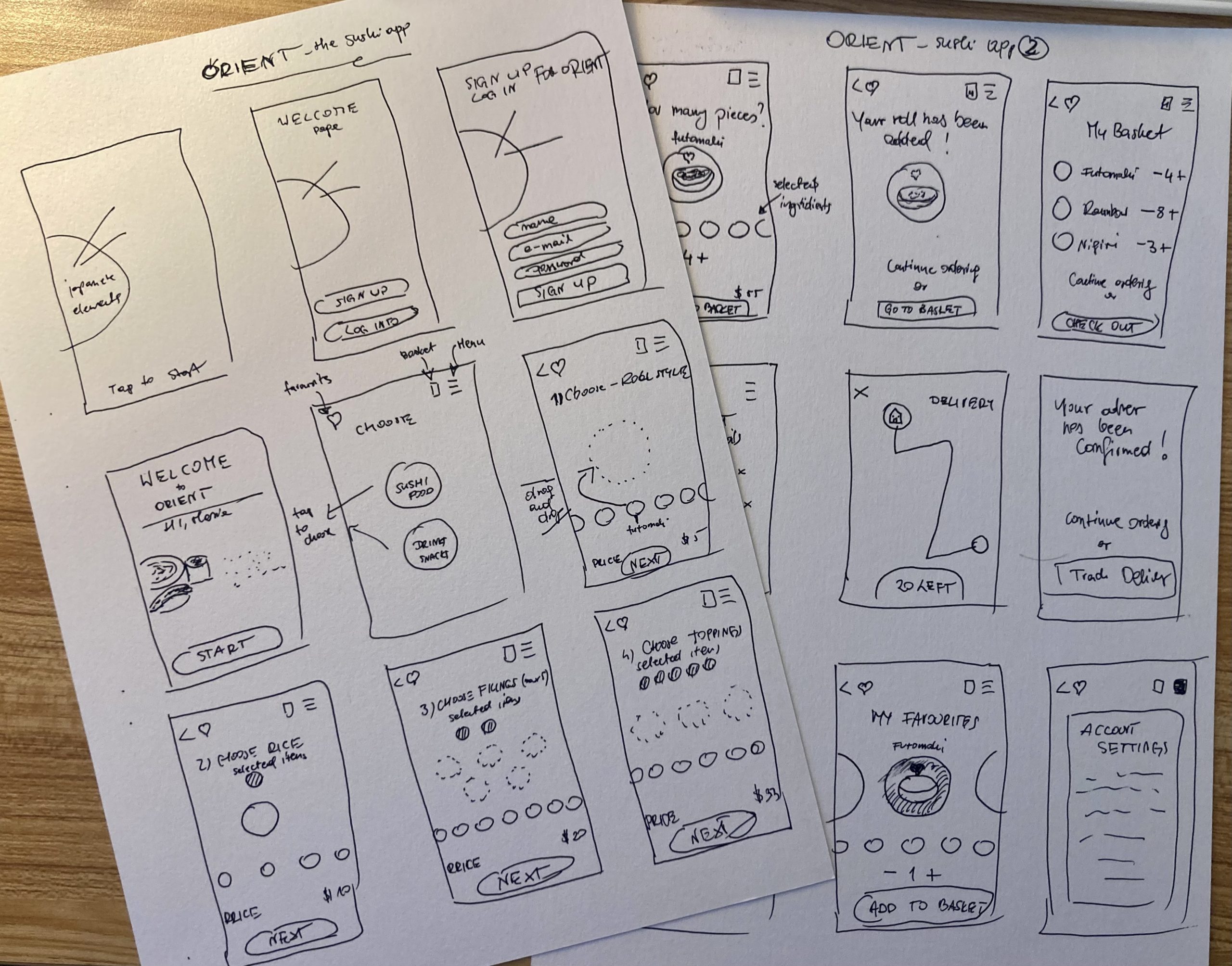
Low-Fidelity Wireframes
After drawing the initial sketches, I created low-fidelity wireframes to illustrate the application.
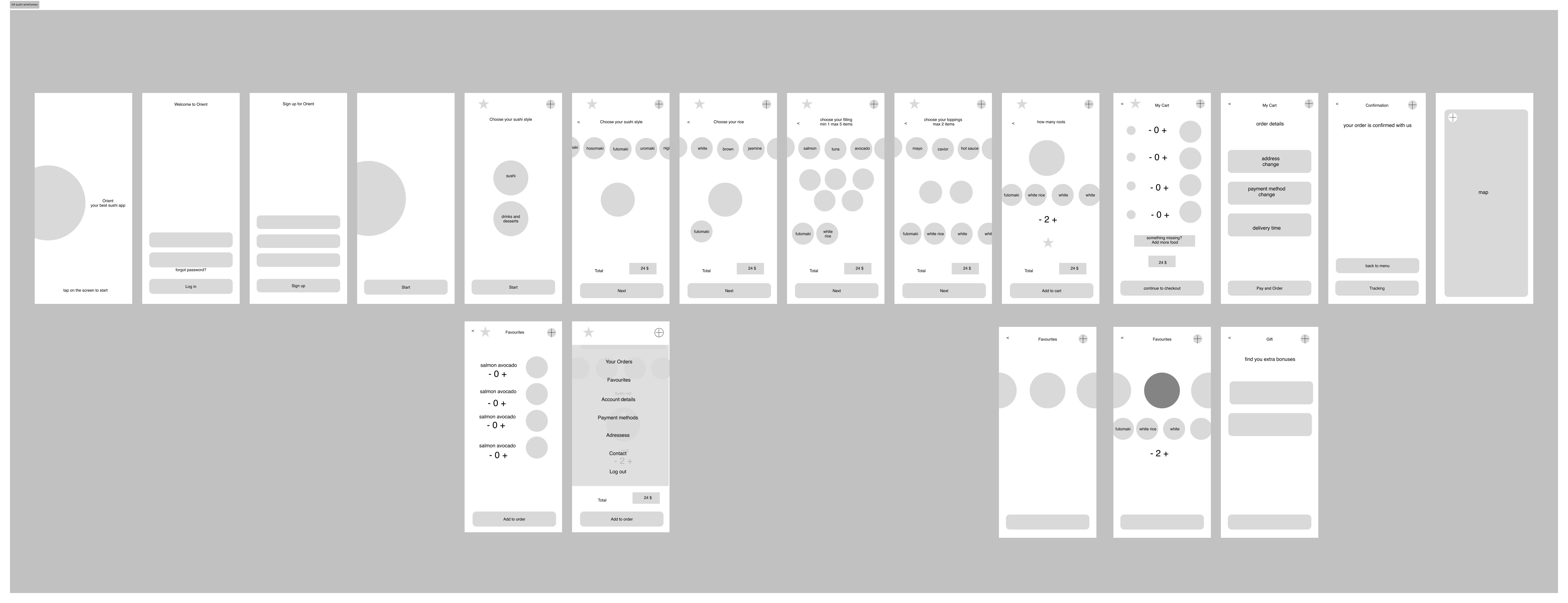
Final Design
It is time to present the final design that has been created. Below is a short presentation of how the application works and the individual screens created in Figma.






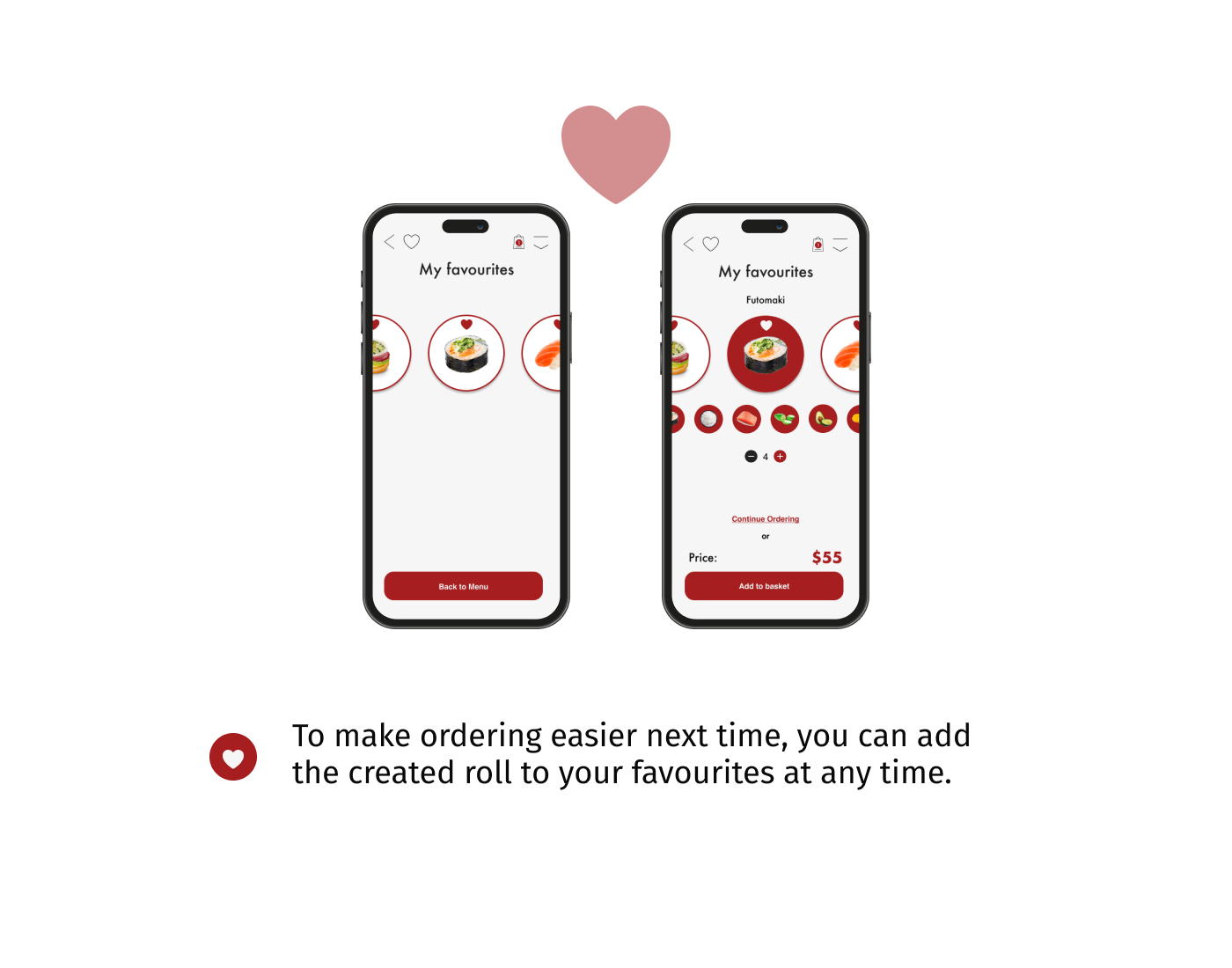

Final thoughts
During the design process, I carefully considered user needs, preferences and pain points, as well as Orient's brand identity and values. Research and personalisation provided valuable insights into the target audience, helping to shape the features, functionality and user experience of the app.
Next steps. I would run additional test sessions with the app prototypes to gather feedback and validate design decisions. This would allow us to find areas for improvement. I would also begin working with developers to bring the application to life, ensuring that the design is implemented accurately and effectively.
